5 Power Automate Features That Will Save You Time
If you’re building Flows, chances are you’re doing it to automate a repetitive task to save time. If that's the case, you’ll be interested in these five features of Power Automate that are designed to save you time as a citizen developer.
In this post I review several features of Power Automate and explain how they can save you time when you’re automating things for your organization.
Run History Metadata
When it comes to supporting and maintaining automation in the Power Platform you may have found yourself spending a lot of time opening and inspecting flow runs to figure out what happened in a run. This can consume a lot of time especially if you’re dealing with hundreds or thousands of flow runs.
For any flows you’re working with you can now add columns to your run history view. This is a great feature and this works both in the run history displayed on the flow details page as well as when you access the full run history page.
This will help you find a specific flow run if you’re trying to troubleshoot or research a problem for a specific data point. For example, someone submits an issue in a SharePoint list. A couple of days later they contact you to ask what the status is. A quick way to identify what’s going on with that request is to look at your flow runs, and add the Title and Author column. You can then use this information to quickly find the flow that corresponds to their issue.

You can take it even a step further. Assume you’re monitoring a new flow to verify you have no issues, but you see a bunch of failed runs just like in the screenshot above. If you have additional metadata you can include those additional fields. This can be helpful in isolating and identifying common traits in your failed flow runs. In this example, we added a couple of additional fields and it’s apparent that there is a common Department value that was used in all of the failed flow runs.

I’ll point out another nice thing about this feature is that once you add those metadata columns to the view, they’ll be there the next time you come back.
That said, there is one missing piece that would make this very nice: that would be the ability to search, filter, and sort the flow runs by the other metadata columns. You can do it by run status, but so far nothing else. Microsoft – are you listening?
Batch Resubmit Flow Runs
Now that we know about flow run metadata and have an easy visual way to identify a common problem, wouldn’t it be nice if after the resolution you could just resubmit all of the failed flows? It used to be that you had to pick through your failed flow runs one at a time and resubmit. Maybe a service was down, a connection was misconfigured, or similar. You had to select each flow and resubmit it.
Now, you can select multiple flows from the run history and click the Resubmit flow run(s) button to send them all.
Take the scenario above, where we figured out four of our runs failed, and it was because our flow simply did not have logic built in to deal with issues submitted by the Human Resources Department. After seeing this, we can make quickly modify our flow to accommodate the new Department, and then come back to run history, select all of the failed runs and resubmit them.
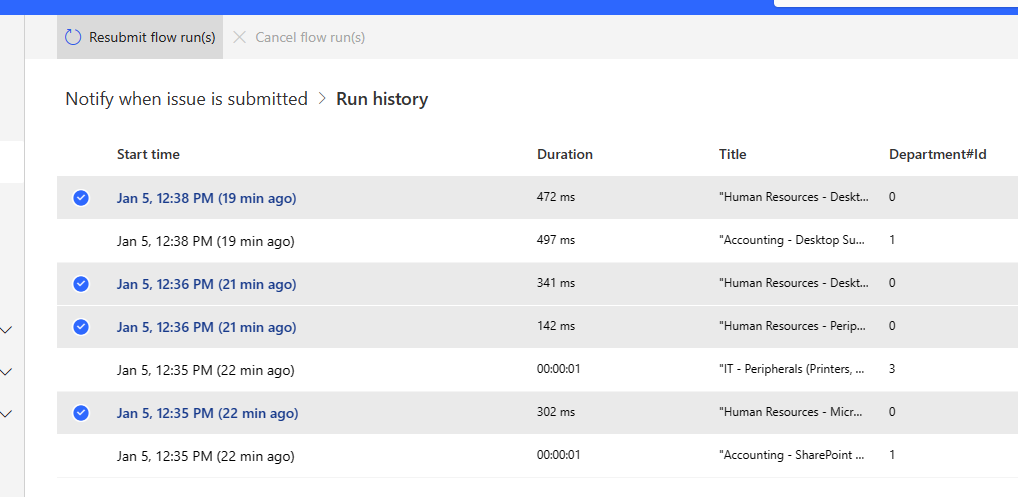
Once resubmitted we can see that the four runs were resubmitted and are now successful.


SELF ASSESSMENT
Is your business getting full value from your M365 subscription?
Billions of dollars are wasted each year on underused subscriptions. Take 3 minutes to find out where your tools are driving results, and where they’re holding you back.
Find Out Now

Is Team Communication Holding You Back?
Find Out in Just 2 Minutes.
Take our quick scorecard to uncover communication gaps and hidden barriers within your team.
Experimental Features
The expression editor for Power Automate has been less than elegant. The clunkiness and inconsistent behavior when adding dynamic content from your flow into expressions is often frustrating and results in reworking and pasting expressions from notepad or similar.
This is a bit time relevant but if you're already using it, great, if not, turn on the Experimental Features so you can use the new Expression editor. In order to turn this on, you simply need to open make.powerautomate.com and click the gear in the upper right corner and click View All Power Automate Settings.
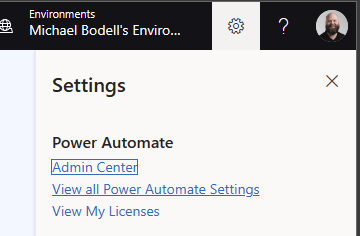
In the Settings dialog, simply turn on the Experimental Features.
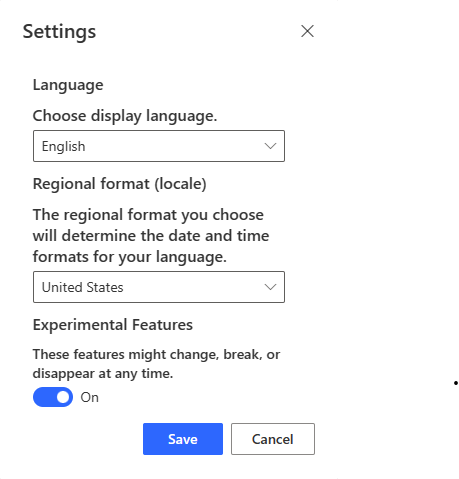
The difference in the Expression editor is pretty significant and can be seen in the comparison of the following screenshots.
The old expression editor has a couple of big challenges that made it cumbersome to use. First, there is limited space to work on your expression and second, when it’s time to add a field value, variable, or other dynamic content into your expression, you have to scroll through a potentially very long list of values to find what you want.
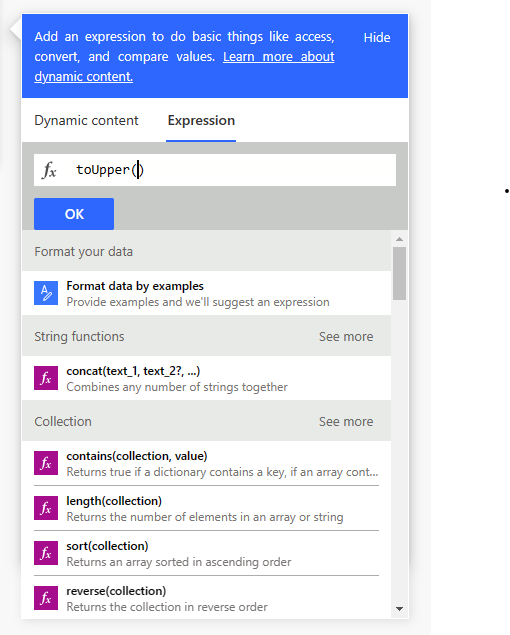
The new expression editor solves both issues. First, we have a much larger text area in which to build our expression. And second, you can switch to the Dynamic values list by using the tab under the expression, and even better, you can search those values.
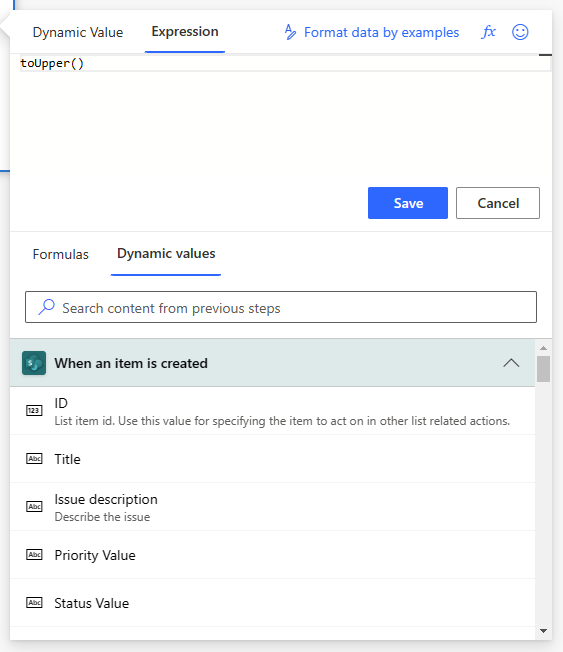
This should save you time by helping build expressions faster as well as making it easier to fix syntax errors because you can see your whole expression.
Copy → Paste Actions
Some actions are more time-consuming than others to configure. HTTP Requests to SharePoint are a good example. Adding these to a flow and configuring from scratch can be prone to error and just takes time.
You can save yourself some time by utilizing the copy / paste feature in Power Automate. You can simply click the ellipses (…) on any action and use the Copy to my clipboard option.

Then you can add an action anywhere in your flow and select from My Clipboard. All of the actions you’ve copied will appear here.

You can even use this to paste into a different flow in another browser tab. The one caveat to consider is that you may need to reorganize or make modifications to the pasted actions depending on what variables or other dynamic content is available at the point where you are copying the action. Remember to look for the red light on the Flow Checker and it will show you where you have problems.
Solutions and Child Flows
Copy and paste can be useful, but don’t get too carried away. If you find yourself using this method to duplicate logic, maybe in multiple branches in the same flow, or across multiple flows, this can become problematic. If this logic must change for some reason, you’ve just multiplied your work. You have to change it everywhere.
If you’re in this boat and you’re ready to do something better, you should consider using Solutions and Child Flows. Mitch Herrema provides a great rundown on why you should use Child Flows here.
In short, you would first create a Solution where your flows will live together.

Then take the logic that you are repeating and put it in a flow that is triggered manually. Add the appropriate inputs to the trigger action. At some point I your child flow must return some value to the calling flow using the Respond to Power App or Flow action.

Then in your other flow(s) (also added to your solution) where you execute this common logic, you simply add an action to call the new child flow.
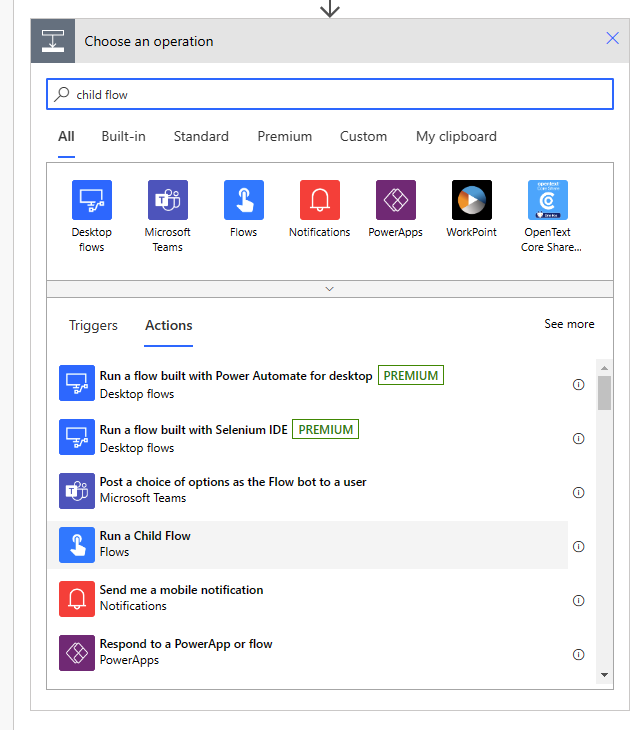
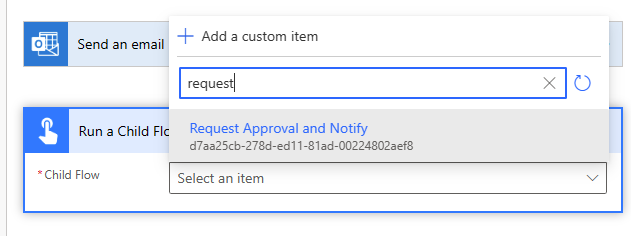
If you live in Office 365 every day, Power Automate is a fantastic tool for both personal and organizational automation. What is the point of it all? To save time of course. So, while you’re saving time using flows to make your life better, hopefully, you’ll find these tips make doing that even faster.
Finally, if you have similar tips or techniques that you use to make using Power Automate better, stronger, and faster, feel free to post them in the comments. I’m always interested to hear about what others are doing.







.jpg)






